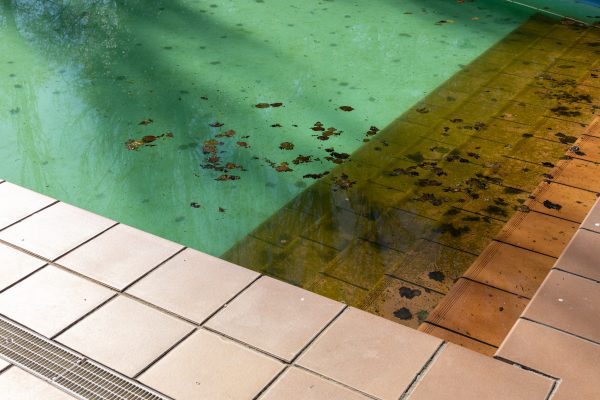Black spots in a pool can be a frustrating sight for any pool owner, especially when they persist despite regular cleaning and maintenance efforts. While black spots are often associated with algae growth, they can also be caused by other factors such as mineral deposits, metal staining, or even organic debris. In this blog post, we’ll explore the possible causes of black spots in a pool that aren’t algae and discuss effective strategies for getting rid of them to restore your pool’s clarity and beauty.
Identifying the Causes of Black Spots:
- Metal Staining: Metals such as iron, copper, or manganese can leach into pool water from various sources, including water sources, pool equipment, or metal fixtures. When these metals oxidize, they can form dark stains or discoloration on pool surfaces.
- Mineral Deposits: Calcium, magnesium, and other minerals present in pool water can accumulate on pool surfaces over time, especially in areas with high evaporation rates or hard water. These deposits can appear as dark spots or scaling on pool walls, floors, or tile grout.
- Organic Debris: Decomposing organic matter, such as leaves, twigs, or insects, can settle on pool surfaces and create black spots or stains as they break down. These spots may appear in areas with poor circulation or where debris tends to accumulate.
Strategies for Removing Black Spots:
- Metal Stain Removers: Commercial metal stain removers are available that can effectively dissolve and remove metal stains from pool surfaces. Follow the manufacturer’s instructions carefully when using these products and consider conducting a spot test in an inconspicuous area before widespread application.
- Ascorbic Acid Treatment: Ascorbic acid, commonly known as vitamin C, can be used to effectively remove metal stains from pool surfaces. Dissolve ascorbic acid powder in water and apply the solution directly to affected areas. Allow the solution to sit for several minutes, then scrub the stains with a pool brush before rinsing thoroughly.
- Chelating Agents: Chelating agents such as EDTA (ethylenediaminetetraacetic acid) or HEDP (1-hydroxyethylidene-1,1-diphosphonic acid) can help sequester metals in the water, preventing them from depositing onto pool surfaces. Regular use of chelating agents can help prevent future metal staining.
- Acid Washing: In severe cases of mineral deposits or staining, acid washing may be necessary to restore the appearance of pool surfaces. Acid washing involves applying a diluted acid solution to the pool surfaces to dissolve and remove stubborn stains and deposits. Due to the caustic nature of acid washing, it’s best left to professional pool service technicians.
- Preventative Measures: To prevent the recurrence of black spots, maintain proper water chemistry and balance, including pH, alkalinity, and calcium hardness levels. Regularly clean and brush pool surfaces to remove debris and prevent buildup.
Conclusion:
Black spots in a pool can be unsightly and frustrating to deal with, especially when they’re not caused by algae growth. By identifying the underlying causes of black spots and implementing appropriate removal strategies, you can effectively restore your pool’s clarity and beauty. Whether dealing with metal staining, mineral deposits, or organic debris, there are various solutions available to address the issue and prevent recurrence. With proper maintenance and preventative measures, you can enjoy a clean and inviting swimming environment all season long.
